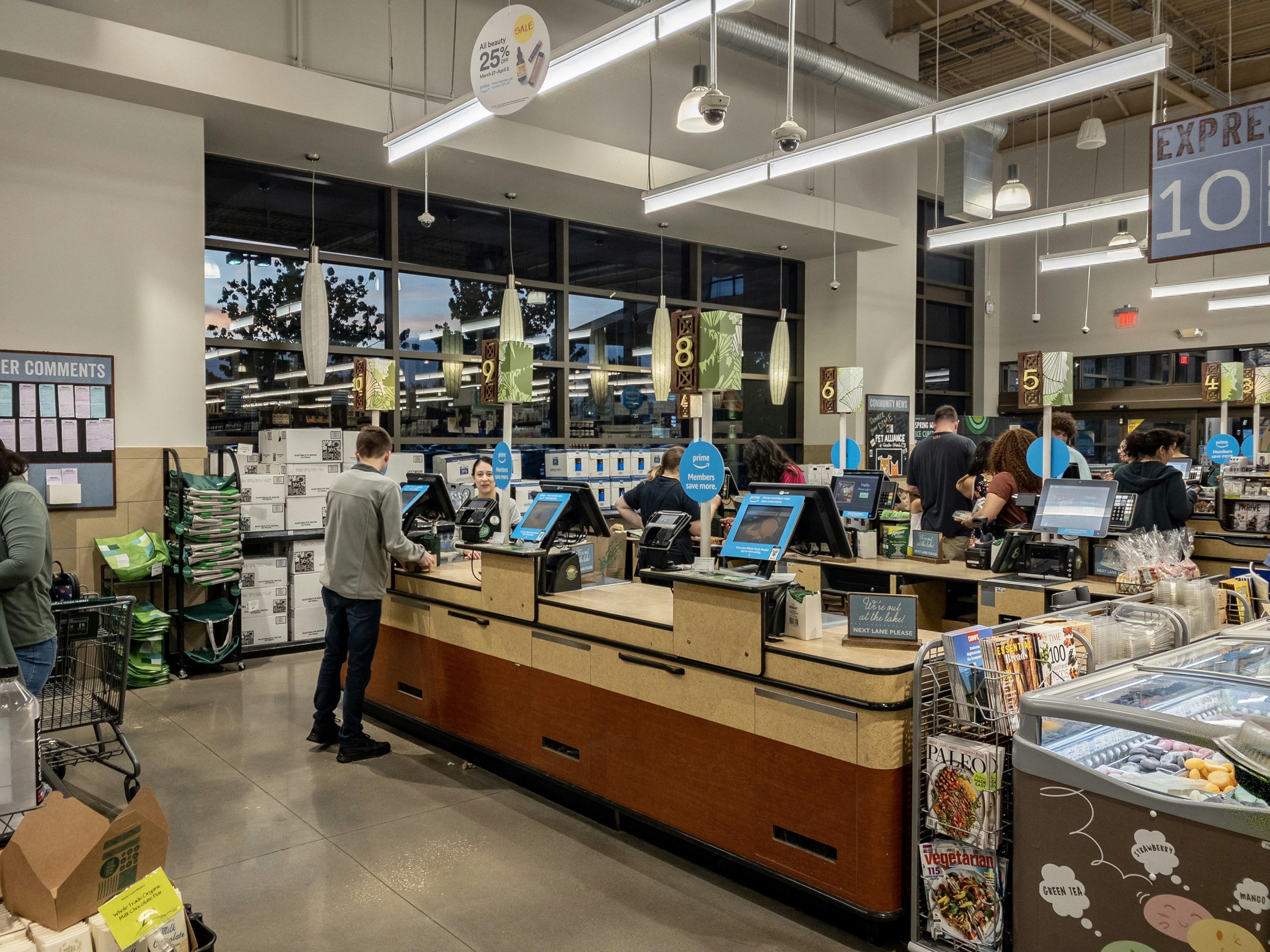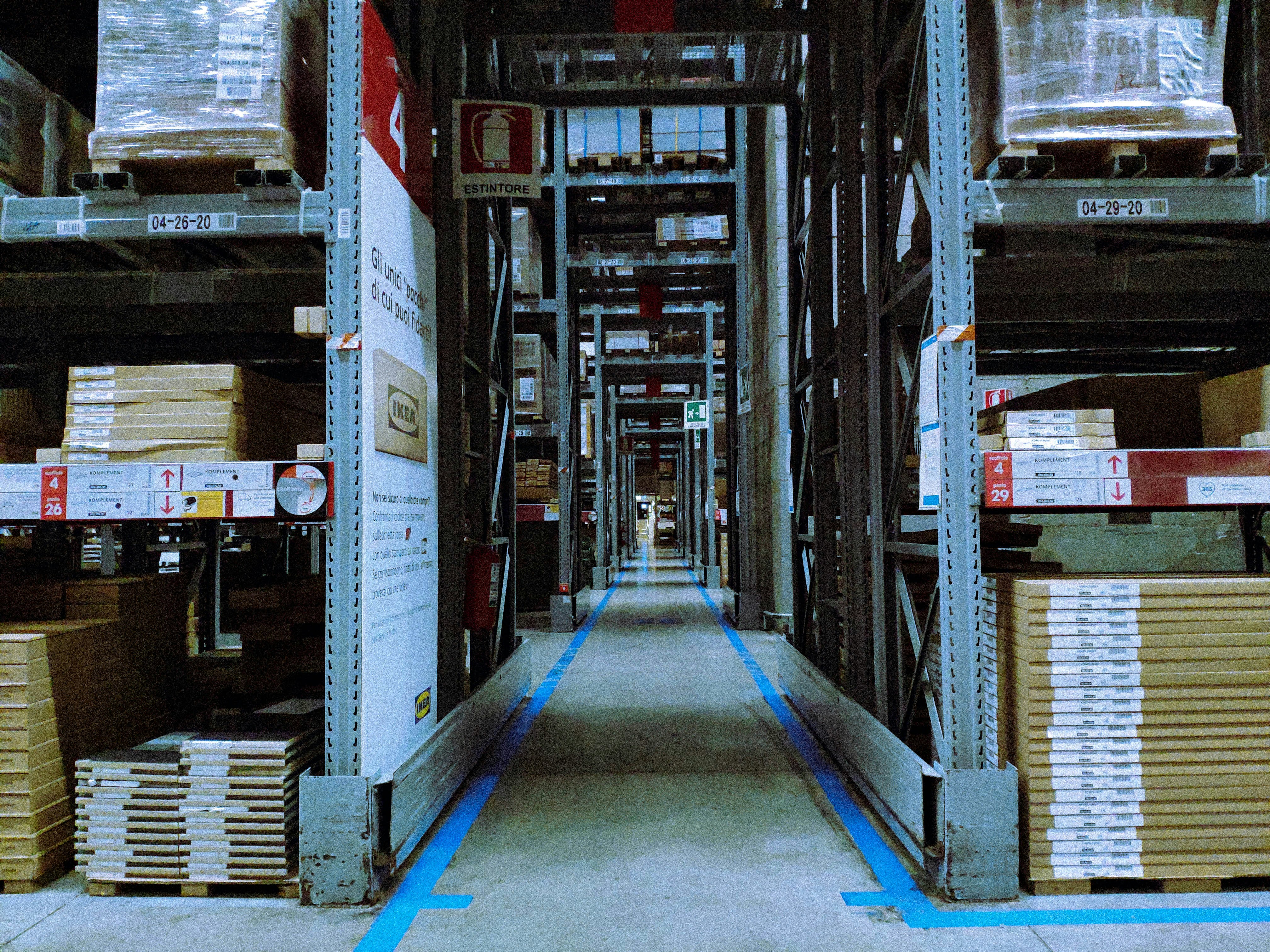Introduction to Barcode Technology
Barcode technology refers to the method of automating the identification and tracking of products through the use of unique patterns represented in graphical form, typically consisting of a series of parallel lines or dots. Initially developed in the 1950s, barcodes have become essential tools in various industries, including retail, manufacturing, logistics, and healthcare, serving as a reliable mechanism for tracking inventory, managing supply chains, and enhancing operational efficiency.
The primary purpose of barcode technology is to enable quick and accurate data capture, eliminating the need for manual entry, which can be prone to errors. Products are assigned specific barcodes that, when scanned, provide immediate access to information such as price, description, and inventory levels. The integration of barcode scanners and software systems allows businesses to streamline operations, significantly reducing the time and labor involved in inventory management.
Over the years, barcode technology has evolved significantly to keep pace with the rapid advancements in technology and the changing needs of various sectors. The introduction of two-dimensional barcodes, such as QR codes, has enabled more information to be stored in a compact space, while also providing consumers with interactive experiences. Additionally, the application of barcode technology has expanded beyond traditional retail environments. For example, in healthcare, accurate patient identification, medication administration, and tracking of medical equipment are now achievable through barcode solutions.
As we move toward 2025, understanding the evolution of barcode technology is crucial, as it lays the foundation for anticipating the emerging trends that will shape the industry. These trends promise to introduce innovative functionalities and the enhanced integration of barcode systems into broader technological frameworks, ultimately improving efficiencies across various applications.
The Rise of 2D Barcodes
The adoption of 2D barcodes, particularly QR codes and Data Matrix codes, is steadily rising across various industries. Unlike traditional 1D barcodes, which store limited information, 2D barcodes offer enhanced data capacity, enabling them to hold significantly more information. This feature is crucial in today’s data-driven world, where businesses seek to communicate complex details swiftly and efficiently.
One of the most compelling advantages of 2D barcodes is their versatility in applications. In retail, for instance, QR codes are used for product information, promotions, and even direct integration with e-commerce platforms. Consumers can scan a QR code on a product label to instantly access detailed specifications, verify authenticity, or benefit from special discounts. This interactivity propelled by 2D barcodes not only streamlines the shopping experience but also fosters consumer engagement.
Moreover, the rise of mobile technology has further influenced the proliferation of 2D barcodes. As smartphones equipped with cameras become ubiquitous, scanning these codes has transformed into a seamless task for consumers. Businesses have recognized this trend, making significant investments in marketing strategies that leverage QR codes to create interactive and engaging experiences. From links to promotional videos to registration forms for events, the 2D barcode’s capabilities are reshaping consumer interaction.
In sectors such as logistics and healthcare, Data Matrix codes are increasingly utilized for inventory management and tracking. Their ability to encode a wealth of data in a compact format enhances efficiency and accuracy in operations. The implementation of 2D barcodes not only empowers businesses with operational advantages but also meets the evolving expectations of consumers who demand a more integrated and transparent shopping experience.
Integration with IoT Technology
The integration of barcode technology with the Internet of Things (IoT) is poised to revolutionize various industries by enhancing real-time tracking, inventory management, and data collection. This synergy benefits organizations seeking to streamline operations and improve efficiency. By connecting barcode systems to IoT devices, businesses can obtain critical insights into their supply chain and inventory status at any given moment. The real-time data enables faster decision-making and minimizes human error, significantly improving operational processes.
One of the primary advantages of incorporating IoT into barcode systems is the ability to monitor assets in real-time. With the implementation of smart barcode scanners linked to IoT networks, companies can instantly capture data about products’ locations and status. This capability facilitates proactive inventory management, allowing businesses to maintain optimal stock levels while reducing waste. Consequently, organizations can prevent discrepancies and capital loss caused by stockouts or overstock situations, thus enhancing overall effectiveness.
Moreover, the connectivity offered by IoT in barcode technology aids in better data gathering. Companies can gather extensive information regarding the life cycle of products, including their movement through various stages of the supply chain. This comprehensive data analysis allows businesses to uncover trends and identify inefficiencies, leading to improved operational strategies. As a result, by leveraging the connectivity provided by IoT, organizations can foster automation within their barcode systems, significantly cutting down on manual processes and labor costs.
In summary, the integration of barcode technology with IoT presents numerous opportunities for businesses to enhance productivity and efficiency. By adopting these advanced systems, companies can achieve a competitive edge while fostering a data-driven environment that supports informed decision-making and effective operational management.
Advancements in Barcode Scanning Hardware
The landscape of barcode scanning hardware is evolving rapidly, driven by technological advancements that enhance efficiency and accuracy across various industries. One notable trend is the increasing adoption of ruggedized scanners, designed to withstand harsh environments. These devices, built from durable materials, offer resilience against drops, moisture, and dust, ensuring longevity and reliable performance in sectors such as manufacturing and logistics. With the growing emphasis on durability, companies can expect fewer malfunctions, resulting in decreased downtime and improved workflow.
Another significant advancement is the rise of mobile scanning solutions. As the demand for flexibility in operations increases, organizations are turning to smartphones and tablets equipped with powerful scanning applications. These mobile solutions not only offer convenience but also integrate seamlessly with existing inventory management systems. This integration enhances data accuracy and streamlines the tracking process, enabling businesses to manage their assets effectively. Furthermore, mobile scanning enhances real-time data capture, allowing companies to respond swiftly to inventory needs or supply chain disruptions.
Improved imaging technology is also a pivotal aspect of barcode scanning hardware advancements. Enhanced image sensors and sophisticated image processing algorithms are enabling scanners to read codes with greater precision and speed. This technology facilitates the scanning of labels that are damaged or poorly printed, a common challenge in fast-paced environments. As these scanners evolve, they are likely to support a broader range of barcode types, including QR codes and two-dimensional codes, offering businesses greater versatility in their tracking systems. Together, these advancements signify a shift toward more efficient operations, reducing errors, and optimizing the overall workflow in various industries.
Cloud-Based Barcode Solutions
The adoption of cloud-based barcode management systems is becoming increasingly vital for businesses seeking to enhance operational efficiency and flexibility. These solutions allow for centralized data storage, which enables companies to consolidate their inventory and operational data into a single, accessible location. By leveraging cloud technology, businesses can ensure that their data is not only secure but also readily available for quick analysis and reporting.
One of the notable benefits of implementing cloud-based barcode solutions is the accessibility it offers. Users can access the barcode management system from any device with an internet connection, allowing for real-time access to data. This accessibility supports remote work trends and can be particularly advantageous for businesses with multiple locations or distributed teams. Employees can quickly update inventory levels or retrieve information using handheld devices, decreasing delays in operations and improving productivity.
Scalability is another significant advantage provided by cloud-based barcode systems. As businesses grow, their operational needs often change, necessitating adjustments in data management. Cloud solutions can easily scale up or down based on the organization’s requirements, allowing for seamless integration of new products, locations, or features without extensive investments in physical infrastructure. This flexibility helps companies adapt swiftly to market changes and customer demands.
Furthermore, real-time updates facilitated by cloud technology enhance operational agility. Businesses can instantly synchronize barcode data, ensuring that all stakeholders have access to the most current information. This instantaneous communication can reduce errors associated with inventory tracking and improve decision-making processes. As a consequence, organizations adopting cloud-based barcode solutions are better positioned to respond to challenges efficiently while optimizing their overall operational workflow.
Artificial Intelligence and Machine Learning in Barcode Systems
The integration of Artificial Intelligence (AI) and Machine Learning (ML) into barcode systems marks a significant technological advancement in various industries. By harnessing the capabilities of these technologies, businesses can enhance the functionality and efficiency of traditional barcode applications, paving the way for smarter inventory management solutions. AI-driven algorithms are capable of analyzing vast amounts of data and making predictive decisions that enhance operational efficiency.
One of the most critical benefits of incorporating AI in barcode systems is predictive analytics. By processing historical data, machine learning models can forecast inventory needs more accurately, which aids businesses in maintaining optimal stock levels. This capability not only reduces excess inventory but also minimizes the risk of stockouts, ensuring that companies can meet customer demands promptly.
Moreover, AI and ML algorithms significantly improve scanning accuracy, which is essential for maintaining data integrity within inventory systems. By employing advanced image recognition and pattern analysis, these technologies minimize errors associated with manual data entry. Consequently, businesses can expect not only increased efficacy but also a reduction in labor costs, as the need for human intervention in barcode scanning processes is significantly diminished.
Error reduction is another notable impact of AI and ML on barcode systems. Traditional barcode solutions can be prone to misreads and discrepancies, resulting in costly mistakes. However, with advanced algorithms continuously learning and adapting, the likelihood of such errors is dramatically decreased. This leads to enhanced customer satisfaction due to improved order accuracy along with streamlined operations, allowing companies to leverage their resources more efficiently.
In conclusion, the application of Artificial Intelligence and Machine Learning in barcode systems is transforming how businesses operate. By optimizing inventory management through predictive analytics, enhancing scanning accuracy, and reducing errors, these technologies are setting new standards for efficiency and reliability in various sectors.
Sustainability in Barcode Technology
The demand for sustainability in various sectors has significantly influenced the barcode technology landscape. As environmental concerns continue to take center stage, the barcode industry is adapting by developing more sustainable solutions. This shift includes the introduction of biodegradable labels and eco-friendly printing methods, which are crucial as businesses increasingly seek to minimize their environmental footprint.
Biodegradable labels represent one of the most notable advancements in sustainable barcode technology. These labels are designed to break down naturally without harming the environment, contributing to waste reduction. In 2025 and beyond, companies will likely prioritize the development and adoption of these labels, as they align with global sustainability goals and consumer preferences for environmentally responsible products. Furthermore, these labels can be produced using materials sourced from renewable resources, further enhancing their eco-friendliness.
Alongside biodegradable options, the industry is also exploring more environmentally-conscious printing methods. Traditional printing processes often involve harmful chemicals and materials that contribute to pollution and waste. In contrast, eco-friendly printing utilizes sustainable inks and processes that reduce harmful emissions and energy consumption. This proactive approach not only addresses environmental issues but also sets a precedent for responsible business practices within the barcode technology sector.
Business leaders play an essential role in this transition towards sustainability. By investing in sustainable barcode solutions, companies can enhance their brand reputation and meet the growing demand from consumers for environmentally responsible practices. The adoption of greener barcode operations is not merely an ethical decision; it can also lead to cost savings in the long run through increased efficiency and reduced waste. Overall, the push for sustainability in barcode technology will continue to grow, shaping the industry and influencing practices for years to come.
The Future of Barcode Standards and Security
The evolution of barcode technology is poised to align with emerging standards and security protocols, addressing the complexities of a digitized economy. As we look towards 2025, the demand for robust, universally accepted barcode standards will escalate, driven by global trade, logistics, and retail sectors. In this ever-changing landscape, the integration of blockchain technology into barcode systems will emerge as a pivotal trend. This marriage of technologies is anticipated to enhance authentication processes and bolster anti-counterfeiting measures, ensuring that products are genuine from point of manufacture to the end user.
Barcodes, as a cornerstone of inventory management and supply chain operation, must adapt to increasing security threats. With the rise of e-commerce and mobile payments, businesses must prioritize secure transactions. Blockchain technology serves as a decentralized ledger, providing transparency and traceability. By embedding unique identifiers within barcodes that are verified against a blockchain, companies can assure consumers of a product’s authenticity, thereby fostering trust and loyalty in their brands. This shift will not only protect businesses against counterfeiting but also safeguard consumers from fraudulent goods.
The need for enhanced security measures will further promote the development of new barcode standards that include advanced encryption methods. Regulatory bodies and standardization organizations will likely collaborate to create guidelines that will address vulnerabilities inherent in current systems. Security-focused standards will become essential, particularly in sectors like pharmaceuticals and food safety, where integrity is paramount. As such, organizations will need to stay ahead of technological advancements and proactively implement these improvements, ensuring their barcode systems are resilient against potential security breaches.
Conclusion: Preparing for the Future of Barcoding
As we look towards 2025, it is evident that barcode technology is evolving rapidly, influenced by advancements in automation, artificial intelligence, and the Internet of Things (IoT). The increasing integration of these technologies is shaping the future landscape of barcoding, making it integral for businesses to stay updated with the latest trends. Emerging capabilities, such as enhanced data analytics and real-time tracking, will not only improve operational efficiency but will also provide companies with a competitive edge in their respective markets.
Businesses must actively monitor these barcode technology trends to ensure they remain relevant and adaptable in an increasingly tech-driven environment. Implementing sophisticated barcode systems could mean the difference between success and stagnation. Companies should consider investing in training sessions to equip their workforce with the necessary skills to utilize new barcoding technologies effectively. Collaboration with technology partners can also facilitate the smooth transition into a more advanced operational framework.
Furthermore, planning strategically for the adoption of these emerging technologies is crucial. Companies should assess their current systems and process workflows to identify areas where barcoding enhancements can provide the greatest benefit. Engaging in pilot programs can help organizations test new systems before full-scale implementation and understand the ROI of their investments in barcode technology. As barcodes grow in complexity and capability, a proactive approach to technology adoption will prepare businesses for the demands of modern commerce.
In conclusion, staying informed about barcode technology trends and being prepared for their integration into business operations is essential for long-term viability. Companies that embrace these advancements will not only streamline their processes but also enhance customer satisfaction and foster innovation in their industry.
© barcodly.com- All rights reserved





